Volume 10, Issue 1
Displaying 1-16 of 16 articles from this issue
- |<
- <
- 1
- >
- >|
-
Article type: Cover
2012 Volume 10 Issue 1 Pages Cover1-
Published: June 30, 2012
Released on J-STAGE: October 02, 2017
Download PDF (9985K) -
Article type: Index
2012 Volume 10 Issue 1 Pages Toc1-
Published: June 30, 2012
Released on J-STAGE: October 02, 2017
Download PDF (51K) -
Article type: Index
2012 Volume 10 Issue 1 Pages Toc2-
Published: June 30, 2012
Released on J-STAGE: October 02, 2017
Download PDF (26K) -
Article type: Article
2012 Volume 10 Issue 1 Pages 1-
Published: June 30, 2012
Released on J-STAGE: October 02, 2017
Download PDF (171K) -
Article type: Article
2012 Volume 10 Issue 1 Pages 3-4
Published: June 30, 2012
Released on J-STAGE: October 02, 2017
Download PDF (177K) -
Article type: Article
2012 Volume 10 Issue 1 Pages 5-9
Published: June 30, 2012
Released on J-STAGE: October 02, 2017
Download PDF (1487K) -
Article type: Article
2012 Volume 10 Issue 1 Pages 11-15
Published: June 30, 2012
Released on J-STAGE: October 02, 2017
Download PDF (1183K) -
Article type: Article
2012 Volume 10 Issue 1 Pages 17-20
Published: June 30, 2012
Released on J-STAGE: October 02, 2017
Download PDF (597K) -
Article type: Article
2012 Volume 10 Issue 1 Pages 21-34
Published: June 30, 2012
Released on J-STAGE: October 02, 2017
Download PDF (3527K) -
Article type: Article
2012 Volume 10 Issue 1 Pages 35-44
Published: June 30, 2012
Released on J-STAGE: October 02, 2017
Download PDF (1235K) -
Article type: Article
2012 Volume 10 Issue 1 Pages 45-53
Published: June 30, 2012
Released on J-STAGE: October 02, 2017
Download PDF (965K) -
Article type: Article
2012 Volume 10 Issue 1 Pages 55-61
Published: June 30, 2012
Released on J-STAGE: October 02, 2017
Download PDF (745K) -
Article type: Article
2012 Volume 10 Issue 1 Pages 63-65
Published: June 30, 2012
Released on J-STAGE: October 02, 2017
Download PDF (299K) -
Article type: Article
2012 Volume 10 Issue 1 Pages 67-69
Published: June 30, 2012
Released on J-STAGE: October 02, 2017
Download PDF (648K) -
Article type: Article
2012 Volume 10 Issue 1 Pages 75-79
Published: June 30, 2012
Released on J-STAGE: October 02, 2017
Download PDF (558K) -
Article type: Appendix
2012 Volume 10 Issue 1 Pages 86-
Published: June 30, 2012
Released on J-STAGE: October 02, 2017
Download PDF (46K)
- |<
- <
- 1
- >
- >|
